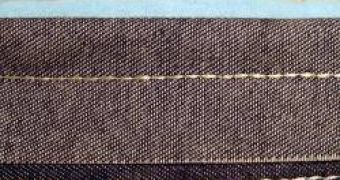Everybody knows that wire tapping is an extremely useful tool for police agencies around the world. Getting a witness or an undercover agent to wear a wire on a meeting with a crime boss is something else.
It's very risky for the cop and very easy for the bad guys to find a wire stuck to the body with duct tape. But a NASA sponsored technology is about to change the famous Hollywood quote to "wearing a wireless."
For now, copper is the most widely used electrical conductor, but it's also heavy and easily breakable. The new technology is called AmberStrand? and it's a spool metal wiring. A trademark of Syscom Technology Inc. sponsored by NASA, it's made of conductive fibers forming a web-like pattern, which are more lightweight and flexible.
Each fiber is like an electric yarn where a polymer fiber is given a metalized coating. Wrapping together a large number of fibers form light and supple strands that conduct electricity.
It's true that the fibers are slightly less conductive than copper, but they can carry any unnecessary current and be used in various space applications where only small spaces are available and sever stress is induced to the conductors.
Such applications include electromagnetic interference (EMI) shielding, aerospace wiring and any other device requiring strong yet lightweight conductors. Another advantage is the fact that the fibers cost much less than copper.
These fibers could even be stitched to clothes that could transmit information or produce heat to warm the body up. There are even possible applications on the ground, like in power lines, lightweight deployable antennas and airbag wiring in cars. Also, the maintenance costs of commercial planes, military aircraft and missile guidance wires could be reduced using the conductive fibers.
Police and military forces could benefit from the use of these fibers woven in uniforms and body armor equipped with built-in sensors and computing devices that could report vital signs and wound locations on soldiers.

 14 DAY TRIAL //
14 DAY TRIAL //